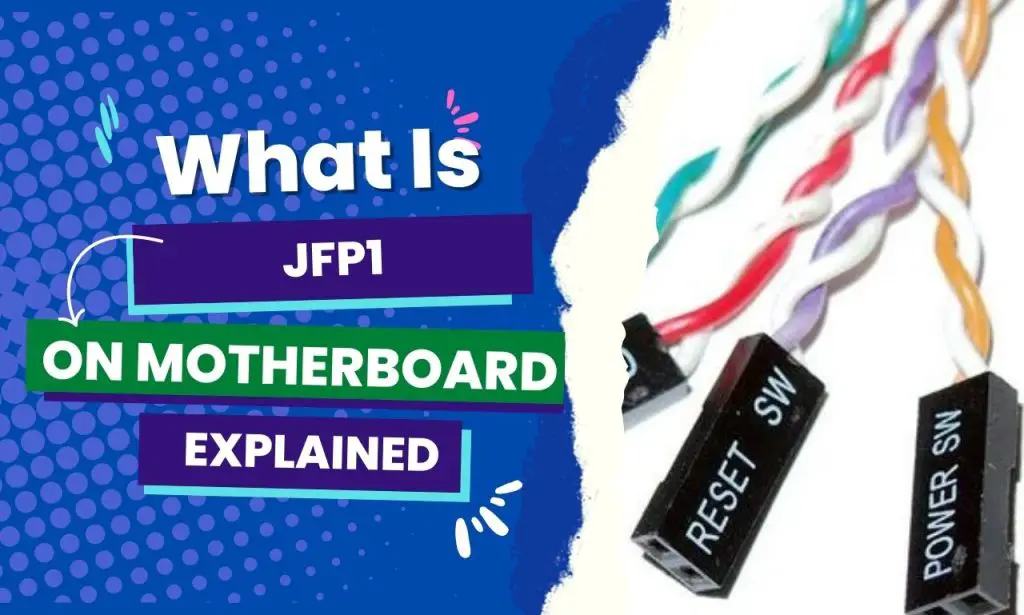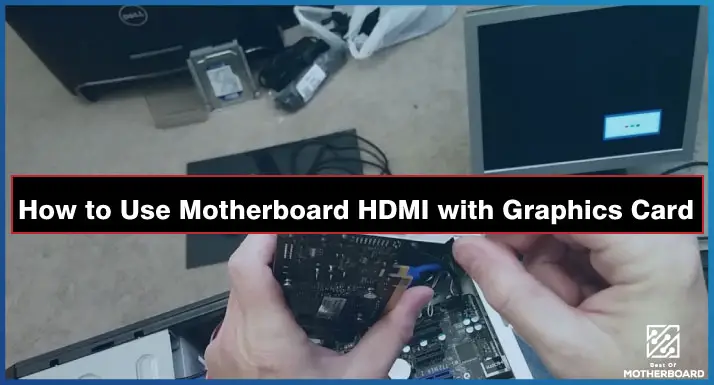JFP1 “Jumper Front Panel 1.” Connectors connect the computer case’s front panel connectors to the motherboard. These connectors are usually near the front of the motherboard. You can control the computer’s power and reset functions from the case’s front panel. They can also link other front-panel features to the motherboard, such as LED indicators or USB ports.
Small groups of switches and connectors on these integrated circuits sometimes make the motherboard, BIOS, and operating system work similarly.
If you use a motherboard like the MSI 661FM2, connecting the JFP1 to the computer case may be difficult. Even if you connect the wires exactly as instructed in the manual, the power may not turn on.
This article will provide answers to your questions about JFP1 on motherboards. First, you need to know that PC motherboards are made up of switches, integrated circuits, and connectors that work together to install an operating system (OS).
How To Install JFP1 Headers On Motherboard
To install JFP1 headers on your motherboard, follow these steps:
- Ensure that your computer is turned off and unplugged from the power source.
- Locate the JFP1 header on your motherboard. It is usually marked as “JFP1” or “Front Panel” and is found near the front panel connectors.
- Take the header and align the notches on the header with the notches on the header socket. Make sure that the header is properly aligned.
- Once aligned, gently press down on the header until it clicks into place and is securely fastened to the socket.
- Repeat the above steps for any additional JFP1 headers you need to install.
- Once all headers have been installed, plug in all necessary front panel connectors (e.g. power LED, reset button, etc.) to the corresponding headers.
- Carefully place your motherboard back into the case and secure it with screws or standoffs.
- Reconnect all cables and power up your computer.
Note: Be sure to handle the headers and connectors with care to avoid damaging them. If you’re not confident in your ability to install the headers, watch this video below
What Does JFP 1 Do on a Motherboard?
The JFP1 jumper is on your motherboard and lets you turn your PC on and off, as well as make an LED light up to show that your PC is running. The light also serves to alert you to hard disk activity. For this jumper to work, it must be correctly connected to your PC case.
Suppose your motherboard has a JFP2 array of pins. In that case, the jumper will connect audio, USB, and perhaps eSATA case connectors to your motherboard.
Generally speaking, you can find the JFP1 array in the lower-right corner of the mainboard.
You should also have a selection of connectors ready to plug in. However, the case may vary depending on the system model. So you can easily spot the jumper by referring to the manual or the manufacturer’s website.
Can you plug a fan into JFP1?
The JFP1 connector should not be used with other devices, such as fans, as doing so could damage the device or the motherboard. It is important to follow the manufacturer’s recommendations and use the correct connectors and connections when connecting devices to a motherboard or other electronic equipment.
Meanwhile, your PC case may include fan headers that can connect fans to the motherboard. The header will feature a row of labeled pins with the fan’s power and control signals if it does.
On most motherboard models, the fan headers are usually near the CPU and other parts that make heat. Depending on the specific motherboard and fan model, you may need to use a Y-shaped adapter or other cables to connect the fan to the header. This will allow you to control the fans’ speed and performance instead of using the JFP1 connector.
Once the fan is properly connected, you should be able to control it using the motherboard’s BIOS, or system software.
When dealing with jumpers, you should always consult your motherboard manual, which will illustrate the jumper array and what each connection does. But generally, it is not ideal for plugging a fan into them.
What goes in JFP1?
Cables that link to the motherboard to connect the reset switch, power switch, power LED, and case speaker go into the JFP1 panel. While these connectors will be labeled appropriately, you will also notice some annotations that will tell which pins are for which case connector.
Meanwhile, keep in mind that the size of the connectors can make them difficult to grab hold of, but a pair of plastic tweezers can help to position them accurately. Some front panel modules include a small latch or clip. This helps to hold the module securely in place.
Once connected, the computer can recognize and use the front-panel devices via the JFP1 connector.
Do all motherboards have JFP1?
There are no standard connectors for the front panel. Motherboard manufacturers may share similar front panel pin layouts, but some have different layouts. So, what you see as JPF1 in one motherboard may represent something else in another model.
For this reason, case makers give you separate wires for each connector on the front panel that will support different pin layouts.
The specific motherboard model determines the exact details of the JFP1 connector. However, all motherboards with this connector will have a row of pins used to connect to the corresponding pins on the front panel module.
I have seen on many motherboards that the jumper is located near the front of the motherboard or on the edge of the board. But some models come with separate connectors for different front-panel devices.
For example, some Asrock mobo models have a JFP1 connector for the power button and a JFP2 connector for the reset button. Meanwhile, many MSI motherboards use a single JFP1 connector for all front-panel devices.
JFP 1 Diagram

Where is JFP1 located on Asus motherboards?
I have access to an Asus Prime B560 Plus motherboard. When looking for the JFP1 connector, I realized the JFP1 connector is called a panel in the manual on an Asus motherboard. So this is what the jumper is labelled with. However, it may vary depending on the particular model.
Where is JFP1 located on Gigabyte motherboards?
The JFP1 (front panel) header is located on gigabyte motherboards in the bottom right corner. If you have any doubts about what you see in that area, refer to page 19 of the manual HERE. It also includes a detailed guide on how to wire everything up correctly for gigabyte boards.
Where is JFP1 located on Asrock motherboards?
The JFP1 header is usually found near the front panel connectors on Asrock motherboards and is used to connect the front panel audio connectors from the case to the motherboard.
On Asrock boards, the JFP1 header is usually labeled with the abbreviation “JFP1” or “F_AUDIO.”
It is still possible that you don’t find any of these in that area. In that case, you should check the motherboard manual for its location. The document will likely have a diagram showing the location of all the connectors and headers on the motherboard.
Where is JFP1 located on MSI motherboards?
On MSI motherboards, the JFP1 header may have a small diagram that shows which pin goes with which audio signal (such as left audio, right audio, or microphone).
On MSI boards, you need to look at the manual to find out how to connect the audio connectors on the front panel to the JFP1 header.
Finally
Many people find it difficult to figure out the Intel front panel connectors on the motherboard. It may even be more challenging to find the JFP1 header on your specific mobo if it’s your first time building a computer.
You should have no problems knowing where the header is on the motherboard and how to connect it to the corresponding pairs of pins. Moreover, it is important to ensure that the front panel audio connectors are properly connected to the JFP1 header.
Incorrect connections can result in audio issues or even damage to the motherboard or other components.
With the information shared in the above article, if you are not comfortable connecting the front panel audio connectors, it would be best to seek the assistance of a qualified technician.




![How to Add More SATA Ports to Motherboard? [Guide] 6 How to Add More SATA Ports to Motherboard](https://bestofmotherboard.com/wp-content/uploads/2022/02/How-to-Add-More-SATA-Ports-to-Motherboard.jpg)
![How To Install Motherboard Drivers With USB? [Guide] 7 How To Install Motherboard Drivers With USB](https://bestofmotherboard.com/wp-content/uploads/2022/02/How-To-Install-Motherboard-Drivers-With-USB.jpg)